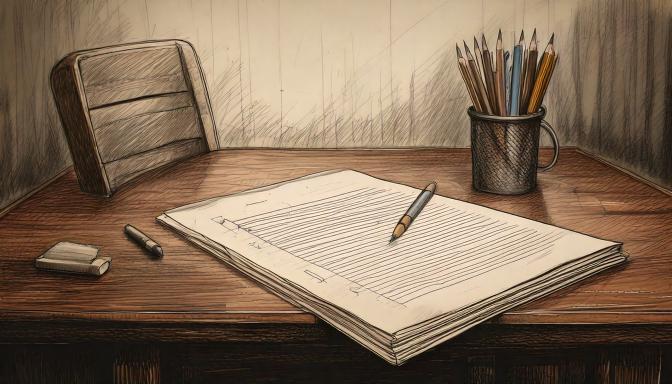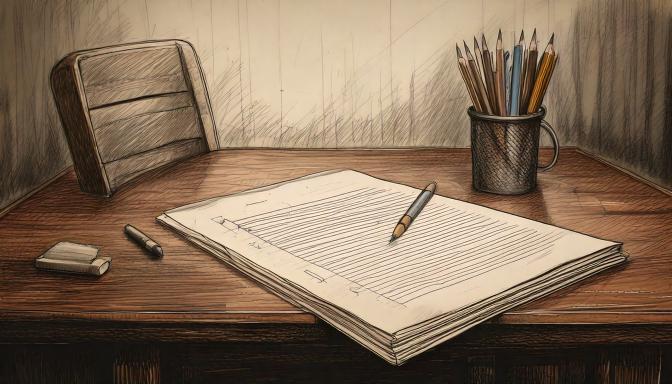What you need for Story Writing

Introduction to Story Writing
1. Understand what Story Writing is all about?:
The Definition of story writing, importance of writing properly, and types of stories
2. Elements of a Story:
- Plot
- Characters
- Setting
- Theme,
- Conflict
3. Benefits of Story Writing:
- Story writing helps in your Personal growth
- It helps in improving your creative expression
- Improves your communication skills if you decide to discuss with people about yopur ides and thoughts without fearing insults.
The next step is Developing Ideas
1. Sources of Inspiration includes :
- Personal experiences
- Observations
- Reading
- Research
Next comes the Brainstorming Techniques:
- Let your mind and brain go wild.
- Free will writing without fear and inhibitions. Magical charatcers dont exist but many writers have still created it. Be it Superman, Batman, Shaktimaan, Krishh etc
Creating a Concept:
- Develop a story idea,
- Craft Compelling Characters
The Character Types can be
- The Protagonist ( Hero) ,
- Antagonist ( The Villan can be human, animal, alien or even luck or fate )
- Supporting characters, and character arcs. We will discuss character arcs in a differrent blog
Now you have to work on the Character Development:
Creating character profiles : Here are some key points on effective character development in a story:
-
Create a Backstory
Give your character a story of their own.Like where they came from, what shaped them, and what experiences influenced their beliefs and behavior. -
What and Why?
Understand what your character wants and why they want it . This drives the story forward. -
Establish Strengths and Flaws
Every characters has both positive traits and weaknesses. Establish their strenghts and Weaknesses -
Show Character Growth or Decline
Let characters evolve in response to events. They should learn, adapt, or change—either for the better or worse. -
Use Dialogue and Actions to Reveal Personality of your character
Establish with the audience who the character is, show it through how they speak (dialogues), interact (actions), and decisions that they take. -
Build Relationships with Other Characters
Interactions and conflicts with other characters help reveal different sides of your character and deepen the narrative. -
Give Them Inner Conflict
Characters become more relatable when they face moral dilemmas or emotional struggles that challenge their beliefs or goals. Ones that each person faces in life. -
Make Them Make Tough Choices
Character is revealed in decision-making. Put them in situations where they must choose between conflicting values or desires. -
Keep Them Consistent, Yet Surprising
While characters should act in line with their personality, occasionally make them do the unexpected in believable ways.
Building a Strong Plot
Every strong plot revolves around a core problem or challenge the protagonist must face. Make it clear why the conflict matters and what’s at risk if the protagonist fails?
Every story follows the Use a Three-Act Structure
-
Structure 1: Introduction to characters, development of their enviroment ( family, firends, college etc)
-
Structure 2 : Confrontation,Inciting incidents, Rising action, obstacles, and complications.
-
Include Turning Points: Plot twists or major decisions should regularly shift the story’s direction and raise tension.
-
Create Escalating Challenges
Each obstacle should be tougher than the last to keep the tension building. -
Keep Characters Driving the Action
Let the protagonist's decisions—not just external events—shape the story. -
Balance External and Internal Conflict
Challenge the character both on the outside (conflicts with loved ones etc) and inside (emotions, beliefs). -
Foreshadow Key Events
Seed hints and clues early on so that major developments feel earned, not sudden.
-
-
Structure 3: Aftermath, Resolution & Climax
Satisfyingly Resolve All Major Arcs
Once you finish writing your plot then begins the actual story writing. Your story will be fgrasping and interesting if you write it in a way that can be visualized by your reader. They should see it as scenes in front of their eyes.
For the purpose of ease let us summarize your writing as scenes though you do not have to actually write it as scenes written in a script ,but thinking that way will help you develop an interesting stroy
Effective Stories are written by formulating the
1. Structure : Scene goals, conflicts, and outcomes
2. Writing: Writing descriptive, engaging, and concise scenes
3. Transitions and Connections: Linking scenes, chapters, and storylines
Final point is to editing and revising
1. Self-Editing : Be self critical to review your work. The more you read with a critical mind the more you will find ways to make your story better.
2. Get Feedback: from your friends, your family and anyone who can give a patient hearing to you.
3. Revising and Rewriting: Making significant changes to improve your story










